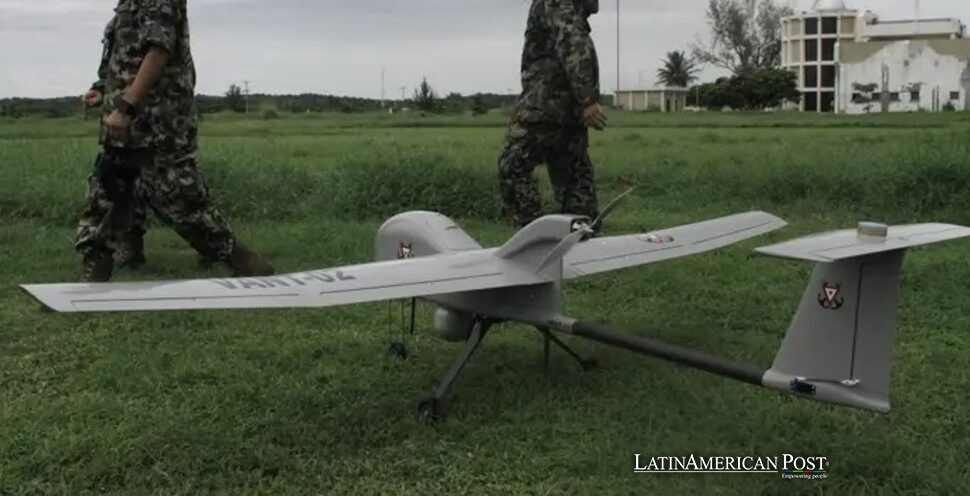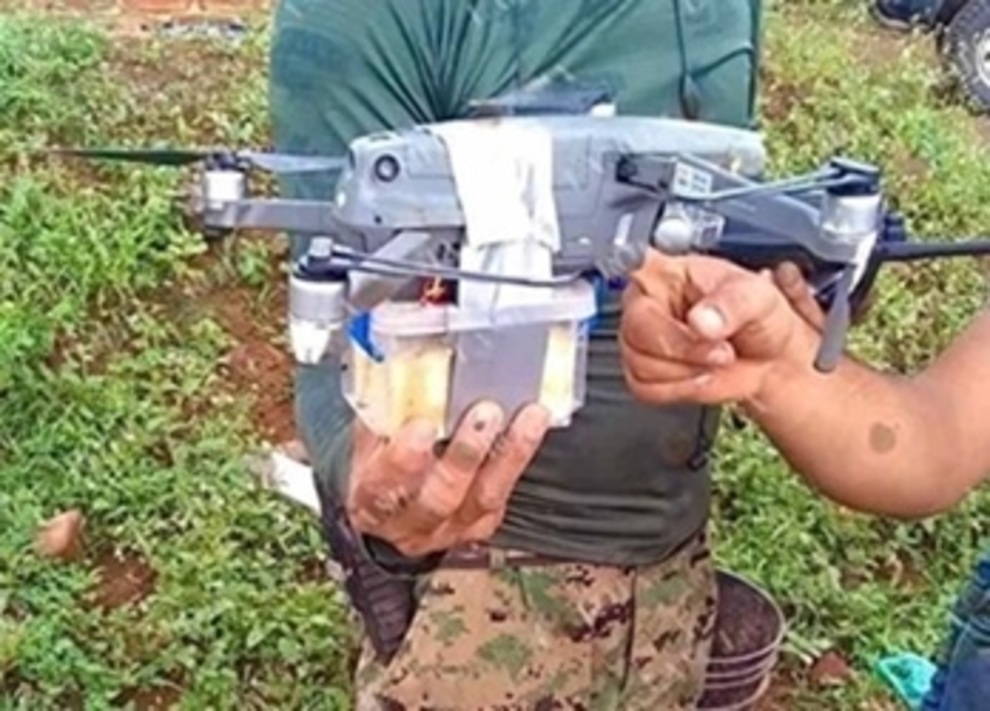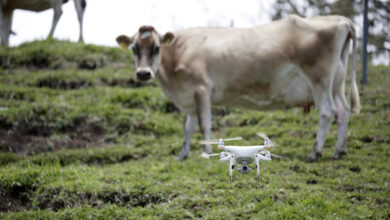Latin America’s Airspace Is Under Criminal Siege—and They Are Getting Smarter

Drug lords and guerrilla fighters across Latin America are racing to weaponize cheap commercial drones, turning smuggling tools into flying bombers. A new report from the U.S. Army War College warns of a looming aerial insurgency—one authorities aren’t ready for.
From Drug Drops to DIY Bombers
Ten years ago, when U.S. border agents started spotting quadcopters flitting low over the Rio Grande, they were usually hauling bundles of heroin or meth. Today, that kind of run feels almost innocent.
“We’ve gone from dropping dope to dropping death,” says Professor Evan Ellis, author of Latin America’s Drone Problem, a new report from the U.S. Army War College’s Strategic Studies Institute. He’s tracked the escalation from January 2024 through April 2025: more drone strikes, more injuries, more precision. Cartels, he warns, have adopted battlefield tactics lifted straight from Ukraine and Syria.
The method is alarmingly simple: Buy a drone from a Chinese online retailer. Follow a YouTube tutorial to rewire its payload hooks. Strap on a grenade or a plastic bottle filled with Tannerite. Plug-in GPS coordinates. For a few hundred dollars, a gang can launch an airborne strike once reserved for national militaries.
Mexico is the starkest example. In Michoacán’s Tierra Caliente, fighters from the Jalisco New Generation Cartel (CJNG) now deploy drones with thermal cameras, identify rival safehouses, and drop makeshift bombs through rooftops—filming the chaos and posting it on Telegram for propaganda.
Mexican forensic reports cited by security analyst Romain Le Cour suggest that recent blasts mimic improvised Ukrainian “bottle bombs”: PVC tubes packed with C-4 and ball bearings. The technique—and the carnage—has crossed oceans.
Colombia to Peru: The Front Lines Shift
This is not a single-country problem. Ellis’s report outlines a chilling map of attacks stretching from the Ecuadorian coast to the Colombian jungle.
- In September, a drone packed with 40 pounds of ammonium nitrate slammed into La Roca prison near Guayaquil. The explosion tore open the roof. Intelligence officials believe the aim was to break out a cartel leader.
- In March, a drone dropped a mortar shell on an army patrol in Colombia’s Catatumbo region, killing one soldier and wounding four.
- Just weeks earlier, a quadcopter exploded yards from General Jorge Alejandro Gutiérrez’s convoy in rural Chihuahua, forcing Mexican troops to pull back under sniper cover.
Even major diplomatic events aren’t safe. At the APEC summit in Lima last November, Peruvian police neutralized 35 suspicious drones using Israeli-made radar jammers positioned around the venue.
The appeal is obvious. Drones fly over roadblocks, reach inside walled compounds, and create psychological shock. They’re cleaner than car bombs and easier to control. And the real kicker? The pilots are often miles away, watching the impact on live video with no risk of getting caught.
“This technology democratizes air power,” Ellis says. “Suddenly, a six-man cell can strike like an air force.”

InSide Crime
Governments Play Catch-Up, One Drone Behind
In some countries, the response has started. But in most, it’s not enough.
Brazil leads the regional counteroffensive. Its military and police share a 1,500-unit drone fleet, and local firms have started building radar-equipped anti-drone guns. Police in Rio de Janeiro now install Dedrone sensors atop hillside favelas to track rogue flights. Officials say they’ve stopped 60 this year.
Colombia has installed Israeli Skylock jammers at military bases near the Venezuelan border. Mexico is testing U.S.-designed microwave disruptors near key oil refineries.
But elsewhere, progress crawls.
In Peru, a contract for anti-drone nets sat in legislative limbo for 16 months—while traffickers switched to longer-range quadcopters. In Argentina, turf wars create enforcement holes: national aviation officials control airspace, but provincial governors oversee prisons. Smugglers exploit the gaps, air-dropping drugs and cellphones into yard blocks with pinpoint accuracy.
“Patchwork defenses just push the attackers toward the softest neighbor,” Ellis warns.
Washington is watching. The 2025 National Defense Authorization Act includes $60 million for drone interdiction training across Latin America. U.S. Southern Command has started sharing intel on dark web drone markets. But distrust lingers. After past surveillance scandals, Brazil’s Congress rejected a bilateral monitoring agreement, citing sovereignty concerns.
Beyond the Skies: What Comes Next Is Scarier
Ellis’s report ends grimly: drones may be the beginning.
Cartels already build semi-submersible narco-subs to move cocaine across the Pacific. With a few tweaks, those vessels could become remote-controlled floating bombs—targets could include gas terminals or cruise ships docking in Cartagena.
On land, self-driving cars could deliver payloads without a driver. Chinese robotics firms now market dog-shaped bots that climb stairs and carry five kilograms—ideal for ambushing police stations.
And then there are burrowing machines—mole-like robots being tested in labs across Asia and Europe. One day, they could tunnel under border walls, emerging beneath barracks or consulates.
This isn’t sci-fi. It’s already underway.
After Russia deployed Shahid drones in Ukraine, Mexican engineers began analyzing their designs on Telegram, trading 3D-print files for tail fins. The pipeline is global: tech made in Tehran, assembled in Shenzhen, financed with crypto from Miami, flown by a teenage cartel recruit who learned everything on TikTok.
The Sky Is No Longer Safe—and Time Is Running Out
Criminal groups have always chased innovation—from encrypted walkie-talkies to homemade submarines. But how fast the destructive power evolves sets the drone era apart.
“Today’s off-the-shelf quadcopter rivals a 1980s cruise missile in precision,” Ellis writes. “Tomorrow’s will cost less than a smartphone.”
Governments across Latin America now face a choice: build a regional air defense doctrine—or continue reacting incident by incident until it’s too late.
Ellis argues that that doctrine needs more than gear. It needs laws, intel sharing, and export controls on dual-use parts. It also requires airspace regulators, customs officials, and military leaders to work from the same playbook.
Because the criminals have already moved to three-dimensional warfare, they’ve stopped driving across borders. Now, they fly. And they don’t need a runway.
Also Read: Colombians Protest Calmly As Rebel Attacks Jolt Election Season
For now, the drone threat still hums mostly above jungles, prisons, and remote outposts. But as drones grow smaller, smarter, and stealthier, that whine overhead could show up anywhere—a concert, a presidential rally, a port, a school.
“The window is closing,” Ellis warns. “And when it shuts, every fight becomes an away game.”




